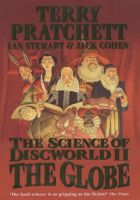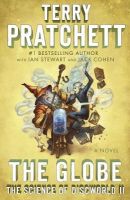 Title: The Science of Discworld II – The Globe
Title: The Science of Discworld II – The Globe
Author(s): Terry Pratchett, Ian Stewart, Jack Cohen
Release year: 2002
Publisher: Ebury Press
Why in Database: This book is the second volume of a four-book series. Repeatingly, these books can definitely be described as popular science, with the addition of Discworld. The chapters are arranged in turns, one about the magicians from the unseen university (generally shorter) and one about science in a broad sense. In the second volume we have issues related to the development of people and their culture. We habe fewer turtle elements here than in the first volume, below we have selected five more interesting:
The first example is a description of how narration works:
On Discworld, the eighth son of an eighth son must become a wizard. There’s no escaping the power of story: the outcome is inevitable. Even if, as in Equal Rites, the eighth son of an eighth son is a girl. Great A’Tuin the turtle must swim though space with four elephants on its back and the entire Discworld on top of them, because that’s what a world-bearing turtle has to do. The narrative structure demands it.
In the next selected passage, turtles (tiny) are chosed as one of the examples of animal hatchlings that delight people.
We, as a species, don’t only specialise in storytelling. Just as with the other specialities above, our species has a few more oddities. Probably the most odd characteristic that our elvish observer would note is our obsessive regard for children. We not only care for our own children, which is entirely to be expected biologically, but for other people’s children, too; indeed for other humankind’s children (we often find foreign-looking children more attractive than our own); indeed for the children of all land vertebrate species. We coo over lambs, fawns, newly hatched turtles, even tadpoles!
The next two fragments are description of the events and a quotation from Small Gods, one of Pratchett’s books:
The Great God’s manifestation takes the form of a small tortoise. Brutha finds this hard to believe:
I’ve seen the Great God Om … and he isn’t tortoise-shaped. He comes as an eagle, or a lion, or a mighty bull. There’s a statue in the Great Temple. It’s seven cubits high. It’s got bronze on it and everything. It’s trampling infidels. You can’t trample infidels when you’re a tortoise.
Brutha has a much simpler vision of Omnianism: it is something for individuals to live by. Vorbis shows Brutha a new instrument that he has had made: an iron turtle upon which a man or woman can be spreadeagled, with a firebox inside. The time it takes for the iron to heat up will give them plenty of time to reflect on their heresies. In a flash of prophecy, Brutha realises that its first victim will be himself. And in due course, he finds himself chained to it, and uncomfortably warm, with Vorbis watching over him, gloating. Then the Great God Om intervenes, dropped from the talons of an eagle.
One or two people, who had been watching Vorbis closely, said later that there was just time for his expression to change before two pounds of tortoise, travelling at three metres per second, hit him between the eyes. It was a revelation. And that does something to people watching. For a start, they believe with all their heart.
The last fragment is about the differences in perception of the universe, which is much more constant for the earth than for the disk, where A’Tuin’s interventions occur sometimes:
Everything ticked and tocked and turned for them like a great big machine. There were rules. Things stayed the same. The same reliable stars came up every night. Planets didn’t disappear because they’ve wandered too close to a flipper and been flicked far away from the sun.

Author: XYuriTT
